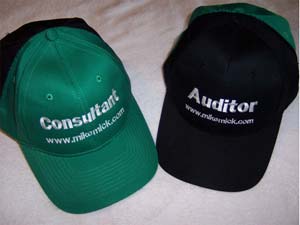Body
 In the past several months, registrar auditors strongly recommended to three former or current clients that they develop and install turtle diagrams for each of their processes. Two auditors from one registrar actually taught a former client how to develop a turtle diagram during a surveillance audit.
In the past several months, registrar auditors strongly recommended to three former or current clients that they develop and install turtle diagrams for each of their processes. Two auditors from one registrar actually taught a former client how to develop a turtle diagram during a surveillance audit.
…
Want to continue?
Log in or create a FREE account.
By logging in you agree to receive communication from Quality Digest.
Privacy Policy.
Comments
Thank you!
Mike:
Thank you so much for your article. I could not agree more that eliminating waste is important. Keeping it simple helps everyone understand quality and ensures the manual will be followed better!
Karen
Who's to blame?
Or to re-train? The auditors, the registrars or the accreditation bodies? Or all of them? I've been an auditor myself for twenty years and I still do internal audits: I'm not proud of myself when going out of a company I have to record nothing but trivial non compliances, to match the standard's requirements. Be them turtles, octopuses or SWOTs, it's always a "significant waste of time", only good for consultants or training organizations that vampire their customers on this. Let's be honest and mirror ourselves: most companies are what they are, they don't want any registration unless forced to, and we all know that there's no worst way to make somebody do something than forcing him.
The us of the turtle diagram
I found your article to be a bit over the top by completely discarding the use of the turtle diagram. I have successfully implemented turtle diagrams and found them to very useful.
I didn't need an auditor to "teach" me how to "add" to my QMS documentation. I replaced the antiquated use of procedures (the ones that never left the file drawer anyway) with a useful tool for communication and understanding. I reduced my quality manual to just a few pages and eliminated every useless procedure (kept the ones required by the standard).
The turtle diagram does not replace a good mapping of the process but it can replace about 75% of most quality systems that were standard and procedure based instead of being process based as the new standard fully intended.
The ISO standard was revised from the old "shall have a documented procedure" days. The old procedure based ISO standard created a cottage industry in writing procedures. The new ISO standard has now evolved into to a process based system that forbids the use of standard based checklists during 3rd party auditing.
Don't be so quick to throw out a useful tool in the guise of reducing documentation when your only answer is to create even more useless procedures.
I’ll take a good process flow chart and a turtle diagram any day over a standard and procedure based quality system. The only real mistake the authors of the new process based ISO standard made was the weak wording that allowed procedure based quality systems to continue with only a matrix to show how their old dusty procedures were “really” processes. The only other possible real error was to still call the new ISO standard a quality management system instead what it should be called… a business management system.
Turtle diagrams and Process Owners
I'm sure I'm not the only person who finds one of the weakest implementations in any QMS is that of process ownership. By sitting down with nominated process owners, taking their process apart and reassembling it in a turtle, then not only has it started to make sense for them, but we actually create a job description for a process owner. Essentially, any manager's job is to provide the right people, hardware, software and documents to ensure their process is creating the right outputs, and this is what a turtle encapsulates.
Selling a turtle as job description (a quiet negotiation with HR beforehand is advised!) has proved exceptionally valuable to me and the process owners I have worked with have been complimented in audit for their understanding. Most of their processes were effective without requiring any sort of procedure because the owners and managers were confident enough to explain the turtle to their team. Sure, they're an excellent audit tool as well.
I cant agree more
Thank you for the article. I found the article while responding to a request to "dust off my turtles, its audit time." I find it inappropriate to hand any document to an auditor that isnt integral to our business. Turtles have a place, lets keep them in the pond.
Usefulness
I agree with most of this especially about having a short quality manual. What's interesting is that Turtle diagrams are incredibly useful within Lean, particularly for cross functional office processes that aren't documented at all. They can help orient Lean events to see what the ideal state is compared to what is really happening.
Add new comment